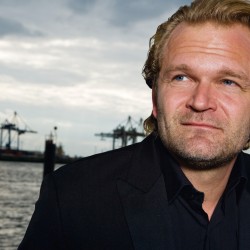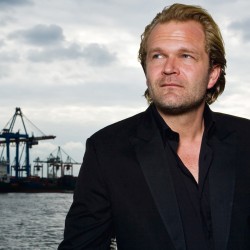Sebastian Knauer
Piano
Sebastian Knauer est né à Hamburg, et commence à jouer du piano à 4 ans. Il étudie à la Vera Ritter-Stiftung avec Gernot Kahl, Karl-Heinz Kämmerling, Philippe Entremont, Andràs Schiff, Christoph Eschenbach et Alexis Weissenberg.
Il reçoit de nombreux prix et donne son premier concert, à 13 ans, dans le concerto pour piano de Haydn en Ré majeur à la Musikhalle de Hambourg.Peu après il commence à se faire connaître internationalement, en participant à un concert européen, organisé par la RAI, à Venise. Cela le conduit à se produire, en Europe, aux USA, en Amérique du Sud et en Asie.
Il joue au Gewandhaus Leipzig, à Berlin, Cologne , à la Philharmonie de Munich, à la Alte Oper Frankfurt, au Concertgebouw d’Amsterdam, au Wiener Musikvereinssaal et au Konzerthaus, au Barbican Center London, à l’ Opéra Comique Paris, à Lucerne, Varsovie, au Lincoln Center et au Metropolitan Museum de New York, au Herbst Theatre à San Francisco, au Kravis Center Palm Beach, au Téatro Municipal de Sao Paulo et à Rio de Janeiro, à l’Oriental Concert Hall de Shanghai, au Performing Arts Center de Hong Kong ainsi qu’ à Pekin.
Parmi les chefs avec qui Sebastian Knauer joue, citons : Gerd Albrecht, Vladimir Fedosseyew, Neeme Järvi, Sir Roger Norrington, Philippe Entremont, Eiji Oue, Jaap van Zweden, Thomas Hengelbrock, John Axelrod et Ingo Metzmacher.
Avec Philippe Entremont, il interprère le repertoire pour deux pianos, comme par exemple à Tel Aviv, dans les Double Concertos de Mozart, avec l’Israel Chamber Orchestra.
Parmi les orchestres : l’orchestre Symphonique de la NDR et l’Orchestre de La Radio de Hambourg, l’Orchestre Philharmonique, SWF Baden Baden, Concerto Köln ; les orchestres de Chambre de Vienne, des Pays Bas, de Bale, Milan et Cologne ; la Camerata Salzburg, l’Orchestre Symphonique de Lucerne, le Sinfonia Varsovie et l’Orchestre Philharmonique de Varsovie, le London Mozart Players, le Palm Beach Symphony Orchestra et l’Orchestre Philharmonique de Shangai….
Il a joué et dirigé tous les concertos pour piano et Mozart avec l’Orchestre Philharmonique de Hambourg. Sebastian Knauer apparait régulièrement dans les festivals de Rheingau, du Schleswig Holstein, au Klavierfestival Ruhr, Mecklenburg, Baden Baden, à Bonn, à la Beethovenfest, au Bremer Musikfest, à Bad Kissingen, Vienne , au John Adams Festival , au BBC Symphony de Londres, à Bath, Colmar, Dubrovnik, au Festival Menuhin de Gstaad, à Vevey/Montreux, au Byblos Festival du Liban, au festival de L’Emilie-Romagne , en Italie, au Lincoln Center Festival NY (USA), à Ravinia (USA), Interlochen (USA), Savannah (USA), El Paso Pro Musica (USA), Santo Domingo et au Shanghai Arts Festival.
En 2004 , il débute au Festival de Salzburg .
Chambriste, Sebastian Knauer fait de nombreuses tournées avec le violoniste Daniel Hope. Il collabore aussi avec d’autres artistes, Hermann Prey, Olaf Bär, Alban Gerhardt, le Quatuor Aron (membres de l’Orchestre de Chambre de Vienne) le Philharmonia Quartet Berlin (issu de l’Orchestre Philharmonique de Berlin), John Neumeier et le Ballet de Hamburg, et l’acteur Klaus Maria Brandauer.
Sébastian Knauer a enregistré de très nombreux disques pour Berlin Classics, Deutsche Grammophon, Glissando, Naxos et Warner Classics , notamment Beethoven, Mozart, Haydn, Schubert, Chopin, Barber, Bernstein, Copland and Gershwin, Mendelssohn,..
L’Enregistrement »East meets West » avec Daniel Hope a reçu le Prix Echo en Allemagne et a été nominé au Grammy…
Son CD consacré à Mozart , avec Sir Roger Norrington et la Camerata Salzburg , a été célébré comme un des meilleurs enregistrements du compositeur et un de ses récents enregistrements, avec des œuvres de Schubert, a reçu les plus grands éloges.



